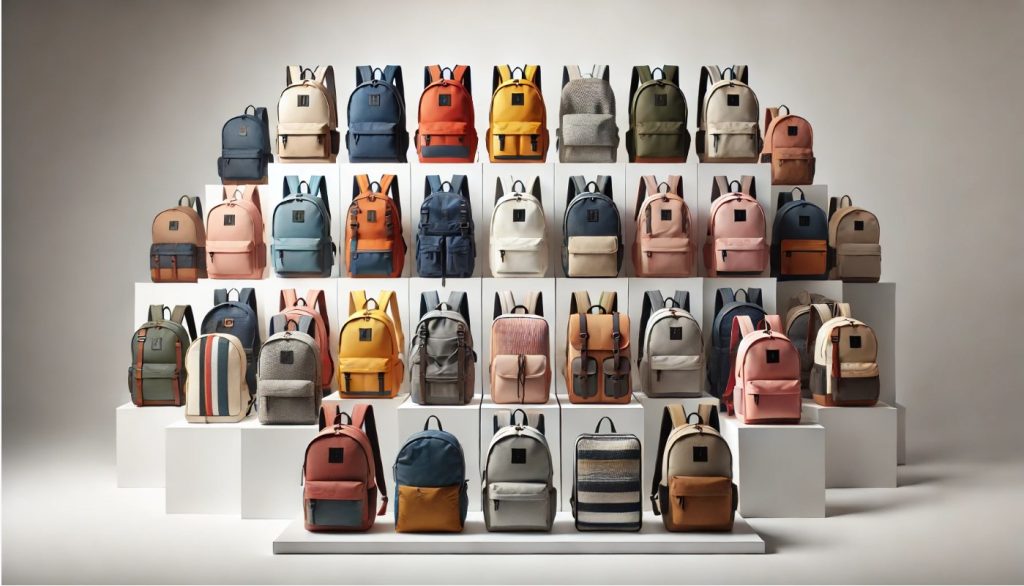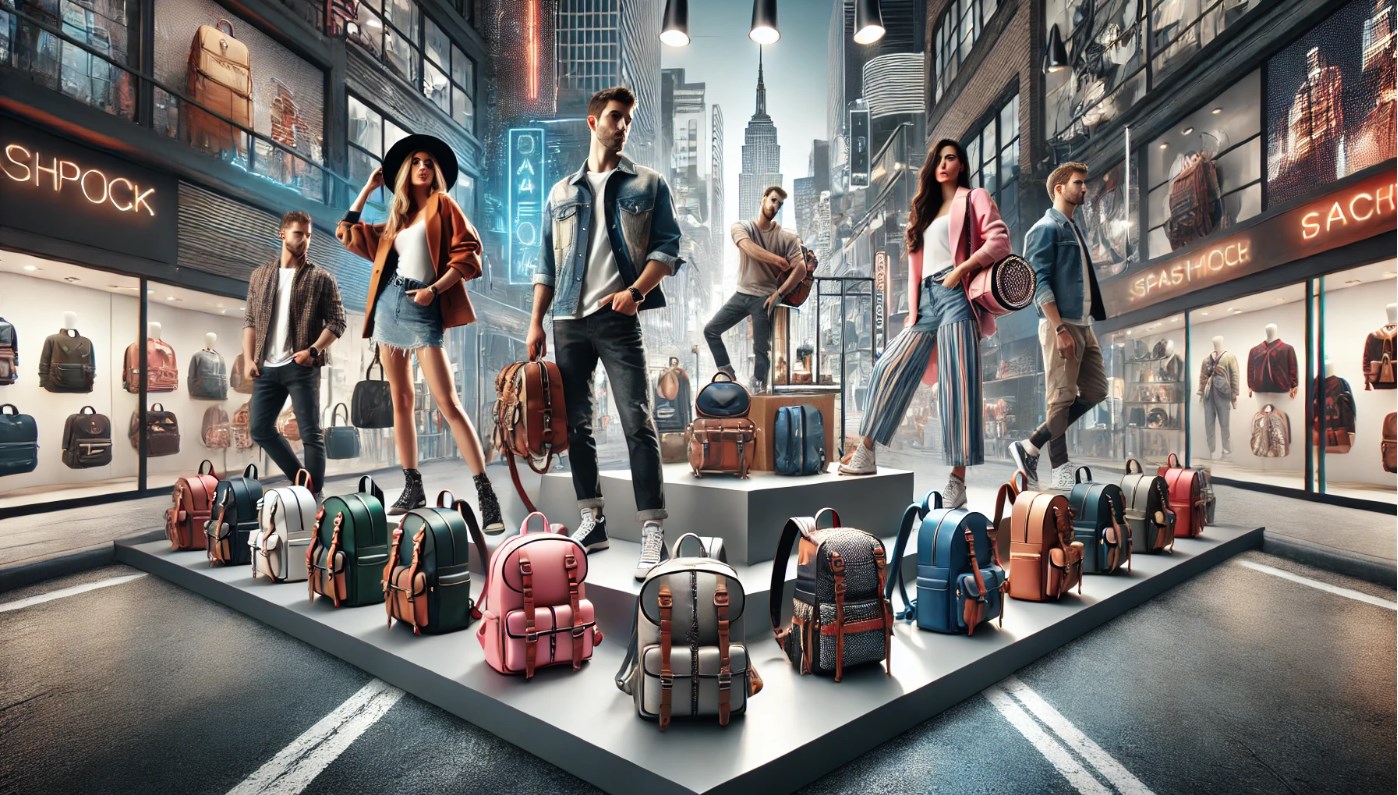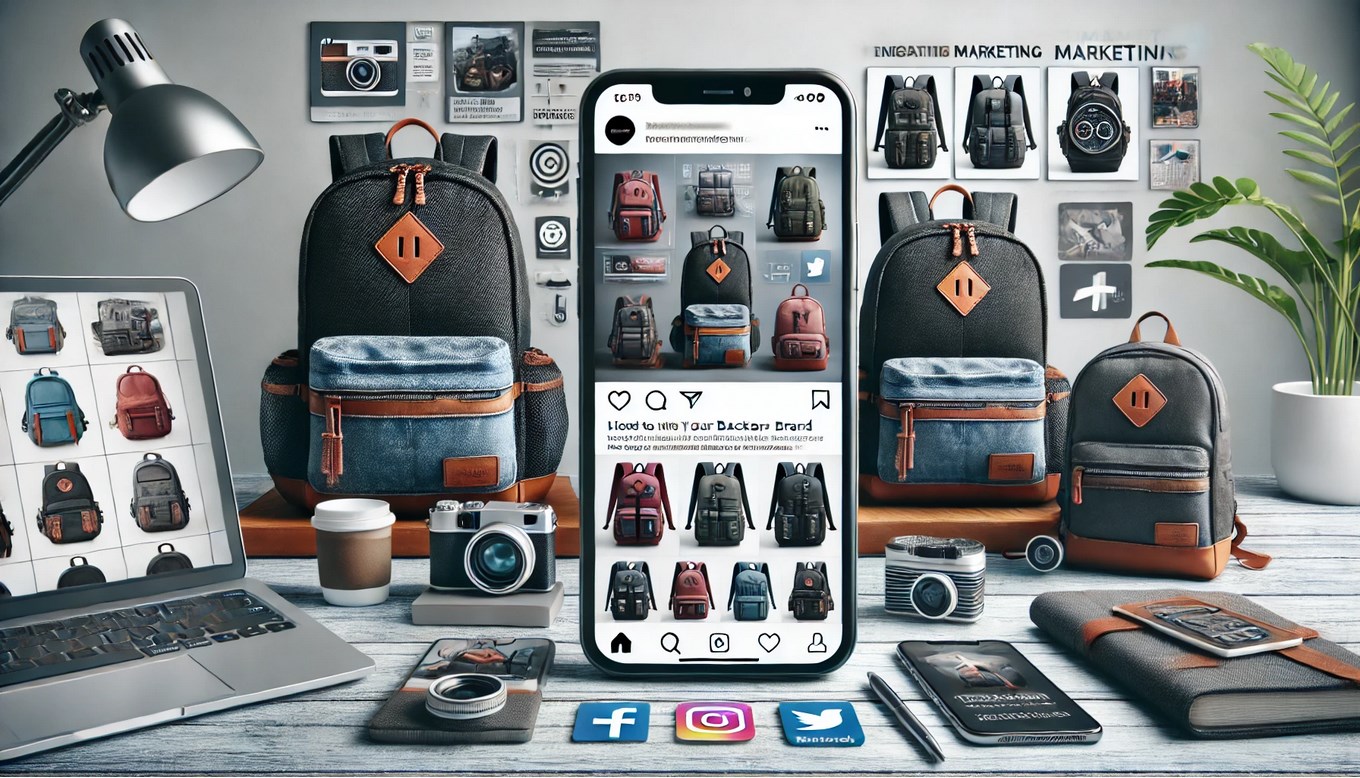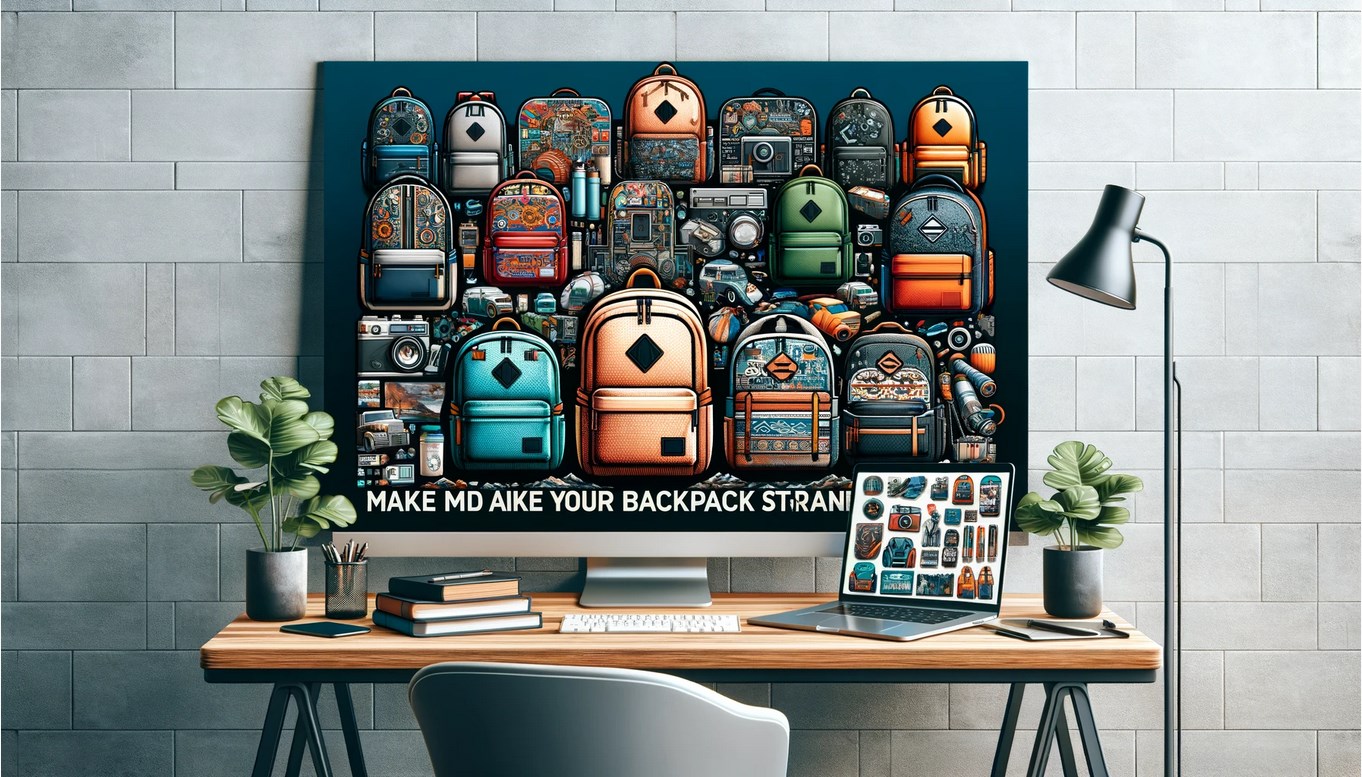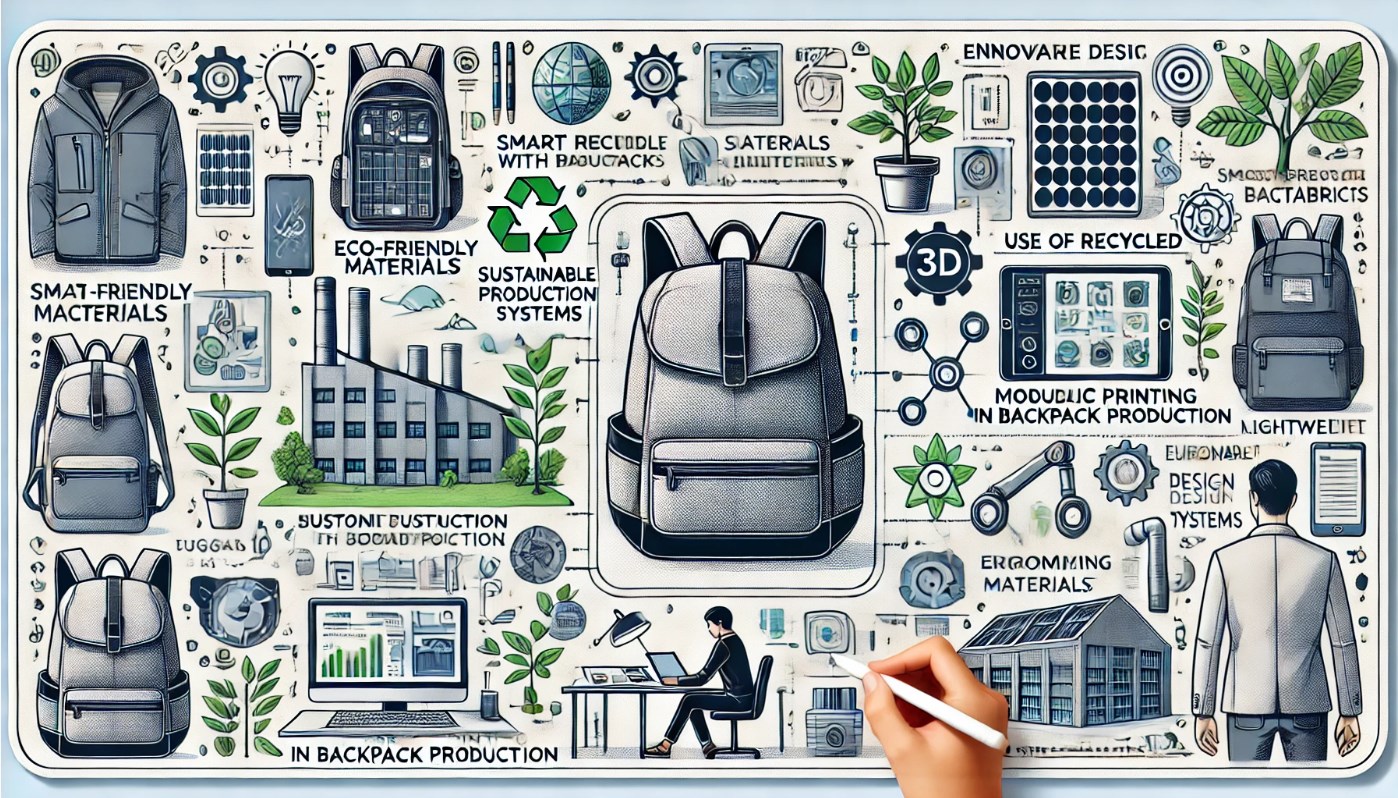Choosing the right colors and fabrics for your backpack brand is a critical step in ensuring that your products stand out, meet consumer preferences, and align with current market trends. Both color selection and fabric choice play a significant role in how your backpack brand is perceived by customers, impacting everything from functionality and durability to style and environmental sustainability. By considering the target market, brand identity, and current trends, you can make informed decisions that elevate your brand and help your products thrive in a competitive market.
Defining Your Brand Identity
Before you begin choosing colors and fabrics, it’s essential to have a clear understanding of your brand identity. Your brand’s personality, values, and target audience should guide your design choices. Whether your brand is focused on adventure, sustainability, luxury, or everyday functionality, the colors and fabrics you select should reflect and reinforce these qualities.
- Adventure or Outdoor Brand: For a brand targeting hikers, travelers, and outdoor enthusiasts, earthy tones like olive green, navy, and brown, combined with durable fabrics like Cordura or ripstop nylon, may evoke a sense of ruggedness and practicality.
- Eco-Friendly Brand: A brand committed to sustainability may prioritize natural fabrics like organic cotton, hemp, or recycled polyester and use colors associated with nature, such as greens, browns, and blues, to align with the eco-conscious values of its target audience.
- Urban or Streetwear Brand: For an urban-focused brand that aims to appeal to young professionals or students, trendy colors like black, gray, and vibrant shades (neon accents, pastels, etc.) paired with durable yet stylish fabrics like polyester or canvas can create a modern, sleek look.
- Luxury Brand: A high-end backpack brand targeting professionals or luxury consumers might use premium fabrics like leather, canvas, or wool-blends and colors like black, brown, or metallic finishes to communicate sophistication and quality.
By aligning your color and fabric choices with your brand identity, you ensure consistency across your product line and build a strong, recognizable presence in the market.
Identifying Your Target Market’s Preferences
Different consumer groups have distinct preferences when it comes to both colors and fabrics. Understanding your target market’s lifestyle, tastes, and purchasing behavior is key to making choices that resonate with them. Consider the following factors when assessing your target market’s preferences:
- Age Group: Young children, teenagers, and adults have different color preferences. Bright, playful colors like primary reds, yellows, and blues are popular among younger kids, while teens and adults may prefer more muted tones or fashion-forward hues.
- Gender Considerations: While many modern brands take a gender-neutral approach, some target demographics may still prefer gender-specific color schemes. For example, darker tones like blacks and grays are often associated with men’s fashion, while softer pastel shades may appeal to women. However, brands should avoid stereotyping and consider offering a variety of colors to appeal to both genders.
- Lifestyle Needs: Consider the activities your target market engages in. Backpack designs for students might prioritize lightweight, durable fabrics like polyester, while backpacks for hiking or travel may require heavier-duty fabrics like ripstop nylon for added durability and resistance to harsh conditions.
Understanding Trends in the Backpack Market
Colors and fabrics are influenced by broader design trends, and staying up-to-date with the latest movements can help you stay relevant in the competitive backpack industry. Researching emerging trends and consumer demands can offer valuable insights into what fabrics and colors are expected to gain popularity.
For instance:
- Sustainability Trends: Eco-conscious consumers are increasingly demanding backpacks made from recycled or natural materials. The use of recycled polyester, organic cotton, and other sustainable fabrics is becoming more popular as consumers seek to reduce their environmental footprint.
- Tech Integration: As backpacks for digital nomads, students, and professionals become more tech-friendly, fabrics that are water-resistant, durable, and lightweight, such as polyester or nylon blends, have gained popularity. Additionally, colors like dark grays or black are commonly chosen for their sleek, professional look.
- Minimalism and Utility: The rise of minimalist fashion means that neutral tones like black, white, gray, and beige are favored for their versatility and timeless appeal. In contrast, utility backpacks with multiple compartments often feature darker tones or camouflage patterns.
By staying informed about current trends, you can make informed decisions on colors and fabrics that will keep your products competitive.
The Role of Color in Backpack Design
Psychological Impact of Colors
Colors have a powerful psychological effect on consumers. Each color evokes specific emotions, and selecting the right color for your backpacks can influence how your customers feel about your brand and product. When choosing colors for your backpacks, it’s important to consider how different shades can impact the consumer’s perception of your brand.
- Red: A bold, energetic color that is often associated with passion, excitement, and action. Red backpacks may appeal to energetic individuals or those looking for a bold statement piece.
- Blue: A calming and trustworthy color, blue is often associated with reliability and professionalism. It is a popular choice for both casual and business backpacks.
- Green: Associated with nature, growth, and sustainability, green is an ideal choice for eco-conscious brands or products intended for outdoor activities.
- Black: A classic, timeless color that conveys sophistication, elegance, and versatility. Black backpacks are often associated with luxury and professionalism, making them a popular choice for high-end or corporate backpack brands.
- Yellow: A cheerful, optimistic color that grabs attention. Yellow is often used in designs for products targeting younger consumers or those looking for a fun, vibrant look.
- Gray and Neutral Tones: Neutral colors like gray, beige, and brown offer a minimalist aesthetic that appeals to consumers who prefer understated, practical designs. These colors are also highly versatile and easy to match with various outfits.
In addition to psychological impacts, consider how the colors will interact with different fabrics. For example, bright colors may look more vibrant on natural fabrics like canvas, while dark colors may complement leather or nylon finishes.
Combining Colors for Visual Appeal
When designing your backpack collection, it’s essential to consider how colors work together. A successful backpack design often incorporates complementary or contrasting color schemes to create a visually appealing product. Some tips for combining colors include:
- Monochromatic Palettes: Using different shades of the same color can create a sophisticated, minimalist look. For example, a light gray backpack with dark gray accents is sleek and subtle.
- Contrasting Colors: High-contrast color combinations like black and white or navy and yellow can create striking designs that grab attention. This works well if you want your product to stand out in a crowded market.
- Analogous Color Schemes: Colors that are next to each other on the color wheel (such as blue and green or red and orange) create a harmonious, cohesive look. This can work well for more relaxed, casual designs.
- Pop of Color: For a simple design, adding a pop of bright color like red or yellow to zippers, straps, or logos can make the product more visually interesting without overwhelming the design.
Targeting Seasonal or Event-Driven Colors
The color palette you choose can also be influenced by seasonal trends or special events. For example:
- Winter Colors: During colder months, darker, more muted colors like charcoal gray, black, and deep burgundy tend to dominate, while fabric choices may include wool-blend or fleece-lined backpacks for added warmth.
- Spring and Summer: Lighter, fresher colors such as pastel shades, light blues, and greens are popular in the warmer months. These colors reflect the vibrancy of the season and are often associated with lighter materials like cotton or nylon.
- Special Events: If your brand is targeting specific events like back-to-school or holiday sales, certain colors like bright primary shades or festive metallic finishes can align with the seasonal mood and attract attention.
Fabric Choices for Backpack Design
Common Fabrics for Backpacks
The fabric you choose plays a critical role in the backpack’s durability, functionality, and appearance. There are several fabric options to consider, each with its unique benefits and drawbacks.
Nylon
Nylon is a versatile, lightweight, and durable fabric commonly used for backpacks. It is water-resistant, abrasion-resistant, and highly durable, making it an excellent choice for backpacks that need to withstand daily wear and tear. Nylon is also relatively easy to clean, which adds to its appeal for school and travel backpacks.
- Pros: Lightweight, durable, water-resistant, easy to clean.
- Cons: May not be as eco-friendly unless made from recycled nylon.
Polyester
Polyester is another popular fabric used in backpack design. Like nylon, it is durable, water-resistant, and easy to care for. Polyester can also be made from recycled materials, making it a more sustainable option for eco-conscious brands.
- Pros: Durable, water-resistant, recyclable, cost-effective.
- Cons: Less breathable than natural fibers, may feel less premium than other fabrics like leather.
Canvas
Canvas is a natural fabric known for its strength and durability. It offers a more premium, textured look and feel compared to synthetic fabrics. While not as water-resistant as nylon or polyester, canvas backpacks can be treated to improve water resistance. Canvas is often used in eco-friendly and fashion-forward backpack designs.
- Pros: Durable, natural look, eco-friendly (especially when organic cotton is used).
- Cons: Not as water-resistant unless treated, heavier than synthetic fabrics.
Leather
Leather backpacks are synonymous with luxury and sophistication. Genuine leather offers durability and timeless style, but it can be heavy and expensive. Vegan leather options are also growing in popularity for those looking for cruelty-free alternatives.
- Pros: Premium appearance, durable, ages well, water-resistant with proper treatment.
- Cons: Heavy, expensive, requires maintenance.
Ripstop Nylon
Ripstop nylon is a tough, durable fabric that is resistant to tearing. It features a grid pattern that prevents rips from spreading, making it an excellent choice for backpacks designed for outdoor or rugged use. Ripstop nylon is lightweight, water-resistant, and offers a modern, tech-forward aesthetic.
- Pros: Tear-resistant, lightweight, water-resistant.
- Cons: Not as stylish as other materials like leather or canvas.
Sustainable Fabrics
As sustainability becomes an increasingly important value for consumers, many backpack brands are turning to eco-friendly fabrics to meet the demand for environmentally responsible products. Some sustainable fabric options include:
- Recycled Polyester (rPET): Made from recycled plastic bottles, this fabric is a great way to reduce plastic waste while providing durability and water resistance.
- Organic Cotton: Grown without synthetic pesticides or fertilizers, organic cotton is a more environmentally friendly option compared to conventionally grown cotton.
- Hemp: Hemp is a strong, durable, and eco-friendly fabric that requires little water or pesticides to grow. It is also biodegradable and naturally resistant to mold and mildew.
- Cork Fabric: An innovative material made from cork oak bark, cork fabric is lightweight, durable, and sustainable. It is often used as an alternative to leather.
By opting for sustainable fabrics, you not only cater to eco-conscious consumers but also position your brand as a responsible and forward-thinking company.
Blending Fabrics for Enhanced Performance
In many cases, combining different fabrics can result in a more versatile, functional backpack. For example, using a blend of polyester and leather can create a stylish yet durable product that offers both the sleek aesthetic of leather and the lightweight, water-resistant qualities of polyester. Similarly, combining ripstop nylon with canvas accents can result in a backpack that is both durable and visually appealing.
When blending fabrics, consider the weight, texture, and function of each material to create a well-balanced design. The combination should enhance both the look and functionality of the backpack, offering the best of both worlds.
Final Thoughts on Color and Fabric Selection
Choosing the right colors and fabrics for your backpack brand is a vital part of creating a product that resonates with your target audience. Whether you’re designing for kids, travelers, students, or professionals, your choices should align with your brand identity and consumer preferences. Understanding the psychological impact of color, the characteristics of different fabrics, and current trends can help you design a backpack collection that stands out in the market and meets the needs of your customers.
By carefully selecting both colors and fabrics, you can create backpacks that are not only functional but also stylish, durable, and reflective of your brand’s values and vision.

